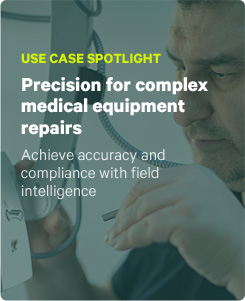Mobile devices have revolutionized fieldwork as much as they’ve transformed our personal lives. The manual capture and sharing of information on paper forms has gone the way of rotary-dial phones and manual typewriters. And much like how you wouldn’t write a report on a typewriter, paper processes simply do not have the flexibility, speed, and accuracy of smart mobile forms.
Luckily, smart mobile forms are now easier than ever to build and deploy.
In the past, enterprises had to rely on the coding expertise of their IT teams to build mobile form apps. This led to overburdened IT departments that, understandably, had difficulties meeting demand without long turn-around times.
With low-code application platforms (LCAP), non-technical employees with first-hand knowledge of the “what” and “why” behind field data capture can easily build smart mobile forms in a fraction of the time and without any coding know “how”. This frees IT to focus on other value-adding projects and less on custom app building.
This eBook identifies the top five elements of building smart mobile forms apps that separate the best platforms from the rest.
- A forms/workflows builder: the operational brain and digital hub where digitizing your business processes begins—whether it be for field service management, asset management, inventory control, or EHS compliance
- Mobile form apps: to replace paper and make it easy to capture data in the field on their mobile devices—even offline
- Easy, seamless integrations: that connects field data to as many back-office systems, cloud services, and people as needed
- Automated workflows: to trigger notifications and tasks, send and store reports
- Enterprise-grade reporting and analytics: to extract more value from your data for real-time insights and better decision-making.




